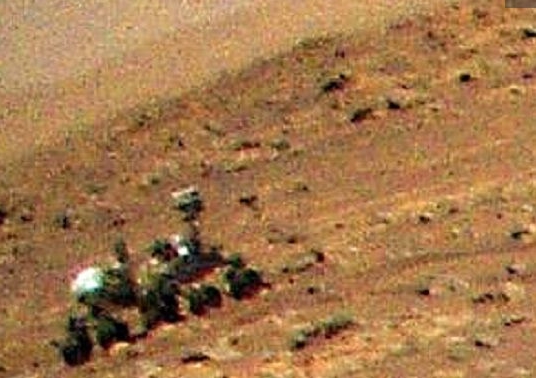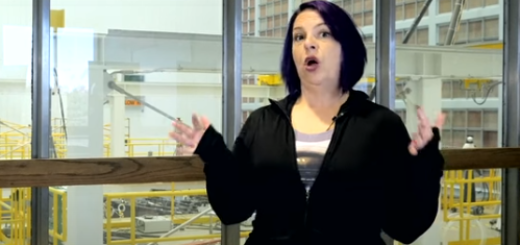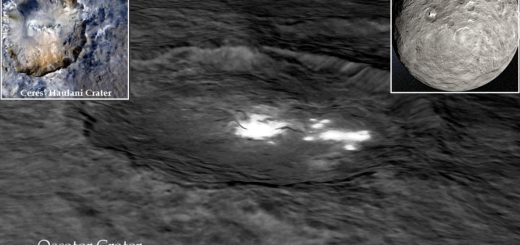NASA extends Mars helicopter Ingenuity’s high-flying mission on Red Planet

Ingenuity has 30 extra Martian days to fly.
NASA’s Mars helicopter Ingenuity will keep flying for an additional 30 days (at least), on an extended mission that will test the chopper’s ability to be a “scout,” the agency announced today (April 30).
Ingenuity was originally slated to operate for 30 days on Mars, conducting a technology-demonstrating mission designed to test whether or not powered, controlled flight is possible on Mars. However, with the success of its first three flights, NASA has decided to extend the helicopter mission an additional 30 sols and shift it into an “operations demonstration phase” that will test additional capabilities of the craft. (One sol, or Mars day, is about 40 minutes longer than an Earth day.)
“After assessing the Perseverance science strategies, there’s room to expand the Ingenuity demonstration into a new phase,” Lori Glaze, director of NASA’s Planetary Science Division at NASA Headquarters, said during a news conference today, referring to the Perseverance rover, which landed with Ingenuity this past February and has been supporting the chopper’s flight program.
NASA’s Mars helicopter Ingenuity, seen here during its fourth flight on April 30, 2021 in a photo by the Perseverance rover, will get 30 extra sols (Martian days) to explore after a mission extension.
NASA’s Mars helicopter Ingenuity, seen here during its fourth flight on April 30, 2021 in a photo by the Perseverance rover, will get 30 extra sols (Martian days) to explore after a mission extension. (Image credit: NASA/JPL-Caltech)
“For Ingenuity to now enter a new operational demonstration phase, our team has been extremely happy and proud,” MiMi Aung, Ingenuity project manager at NASA’s Jet Propulsion Laboratory (JPL), said during the same conference. “It’s like Ingenuity is graduating from the test demo phase to, now, the new demo phase, where we can show that how rotorcraft can be used.”
Aung spoke as her team awaited word from Ingenuity of its fourth flight on Mars, which occurred earlier today. That flight was a success and Ingenuity’s fastest and farthest one yet.
On April 19, Ingenuity took its first flight, rising of the Red Planet’s surface, hovering and landing safely back down. This historic event was followed by three additional flights — including one just this morning — that went seamlessly, showcasing the 4-lb. (1.8 kilograms) craft’s abilities, which are impressive given Mars’ thin atmosphere.
However, the flights thus far have required Perseverance to stay nearby. The rover has been capturing imagery of the flights and serving as a communications link between Ingenuity and mission control. Ingenuity’s mission was therefore set to stop after 30 days and up to five flights so that Perseverance would be able to move onto its own science mission.
But while NASA officials had this conservative, initial plan that would ensure Ingenuity wouldn’t encroach on Perseverance’s work, the helicopter has been performing so far above expectations that they think they can continue operations with Ingenuity and not interfere with Perseverance’s objectives, which involve hunting for signs of ancient Mars life and collecting samples for future return to Earth.
Perseverance will be farther from Ingenuity during the new flight phase, but the team thinks that the pair will still be able to communicate effectively. Additionally, Perseverance will not take the time to document the flights Ingenuity makes during its extended mission.
“What we aren’t going to be doing anymore, which took an enormous amount of time, is imaging the helicopter flights. That is what took away from our ability to continue with the science mission in one way or another,” Jennifer Trosper, Perseverance rover deputy project manager at JPL, told Space.com during the news conference.
Ingenuity aced its fourth flight this morning, after a one-day delay caused by a glitch that has cropped up before. The fifth flight will likely take place in about a week, Aung said.
NASA’s Mars helicopter Ingenuity captured this photo if its shadow on the Martian surface during its second flight on April 22, 2021.
NASA’s Mars helicopter Ingenuity captured this photo of its shadow on the Martian surface during its second flight on April 22, 2021. (Image credit: NASA/JPL-Caltech)
Flights four and five serve to help transition Ingenuity into its extended-mission phase, she added. And the fifth hop will be a one-way trip to a brand-new flight zone
“We are going to move farther away from the helicopter; in fact, the helicopter’s moving farther away from us to go to a different location,” Trosper said.
Ingenuity will likely fly at the new site one or two times during the month of May, Trosper said, while the mission team continues to explore the helicopter’s scouting and imaging capabilities.
As that expected timeline indicates, Ingenuity’s flight cadence will slow down a bit during the extended mission, going from one flight every few days to one every two to three weeks, Trosper said.
This zoomed-in view from NASA’s Mars helicopter Ingenuity shows the Perseverance rover and its tracks from the air on April 25, 2021. (This photo has been cropped so that the rover is more clearly visible.)
And that 30-sol target is not a hard deadline for the extended mission.
“We’re going to kind of see how it goes,” Glaze said on this topic. “We’re going to watch the performance, we’re going to see the kind of data products that we can get back and see how the two flight systems work with each other, with Perseverance taking the lead and being very focused on that science.”
And, she added, “after that 30- sols period, we will assess where we are … we’ll check on the health of the helicopter, we’ll see how it’s being helpful to Perseverance or if there are impacts to the ability of Perseverance to do its core science jobs. And we’ll assess the whole picture and see where we are at that time. So there is a potential to go beyond that; we’ll have to want to assess it after 30 days.”
But Ingenuity’s flying days will definitely be over by the end of August.
“The “That timing will allow the rover team time to wrap up its planned science activities and prepare for solar conjunction – the period in mid-October when Mars and Earth are on opposite sides of the sun, blocking communications.” NASA officials wrote in a statement today.



 Creators of mankind
Creators of mankind Description of “Tall white aliens”
Description of “Tall white aliens” Where they came from?
Where they came from? About hostile civilizations
About hostile civilizations The war for the Earth
The war for the Earth “Tall white aliens” about eternal life
“Tall white aliens” about eternal life Video: “Nordic aliens”
Video: “Nordic aliens” Aliens
Aliens Alien encounters
Alien encounters The aliens base
The aliens base UFO
UFO Technology UFO
Technology UFO Underground civilization
Underground civilization Ancient alien artifacts
Ancient alien artifacts Military and UFO
Military and UFO Mysteries and hypotheses
Mysteries and hypotheses Scientific facts
Scientific facts


















